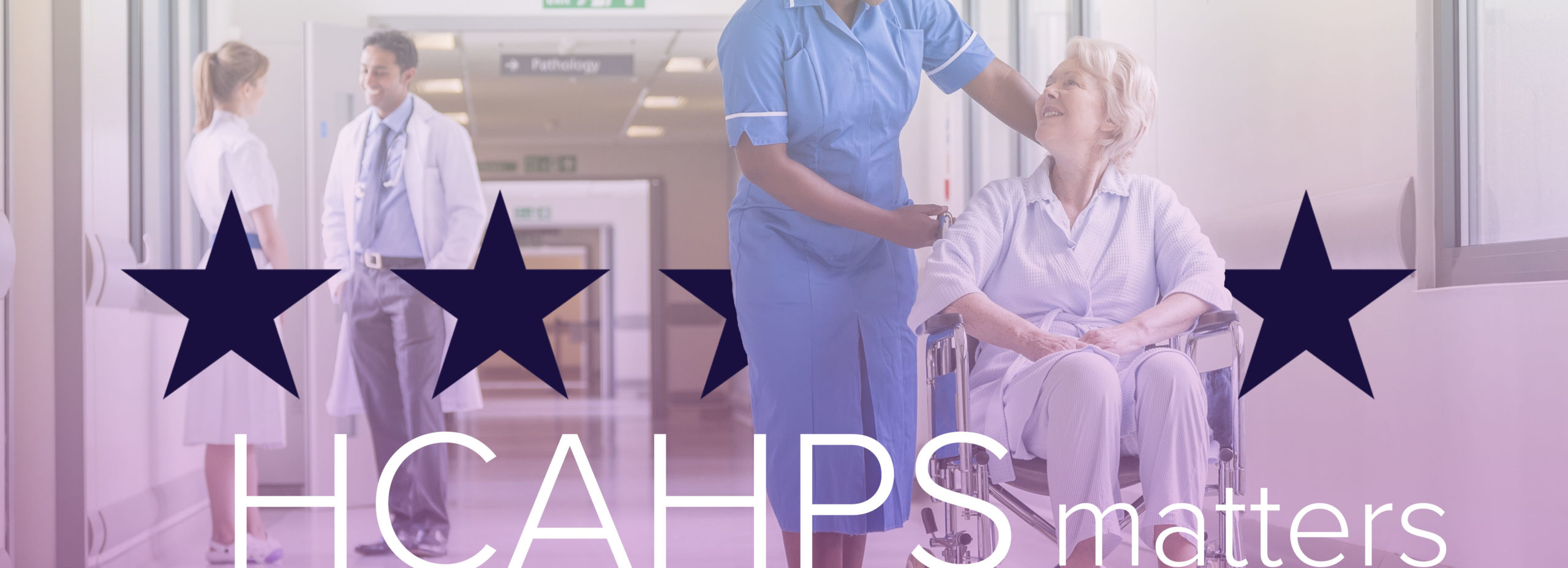Customer surveys are the best way to gain meaningful insights into your company's products and services. People who take the time to fill out surveys usually have very strong opinions one way or the other, so making a good impression is paramount. Healthcare is no different. New technologies using artificial intelligence create better care for patients and in turn, improve your hospital patient score.
When hospitals receive good HCAHPS survey results, it's the equivalent of earning a golden ticket. The results of the HCAHPS survey—the Hospital Consumer Assessment of Healthcare Providers and Systems—are publicly reported and provide the patient perspective on the care they received at your hospital. These quality scores are linked to the Hospital Value-Based Purchasing (VBP) program, which directly correlates to hospital incentive payments. In other words, bad patient scores impact the bottom line.
The HCAHPS survey contains 21 patient perspectives on care and patient rating items that include the following key topics:
- Communication with doctors & nurses
- Responsiveness of hospital staff
- Pain management
- Communication about medicines
- Discharge information
- Cleanliness and quietness of the hospital environment
- Transitions of care
 The survey is administered after discharge to a random sampling of adult patients. More than 4,000 hospitals participate in the HCAHPS with more than three million patients completing the survey each year.
The survey is administered after discharge to a random sampling of adult patients. More than 4,000 hospitals participate in the HCAHPS with more than three million patients completing the survey each year.
Value-Based Purchasing Program
The Hospital VBP Program is designed to improve the quality of care and patient experience in the hospital. It encourages hospitals to improve the quality, efficiency, patient experience and safety of care that Medicare beneficiaries receive during acute care inpatient stays by:
- Eliminating or reducing adverse events (healthcare errors resulting in patient harm).
- Adopting evidence-based care standards and protocols in order to obtain the best outcomes for Medicare patients.
- Incentivizing hospitals to improve patient experience.
- Increasing the transparency of care quality for consumers, clinicians, and others.
- Recognizing hospitals that provide high-quality care at a lower cost to Medicare.
Hospitals are rewarded based on the quality of care provided to Medicare patients, not just the quantity of services provided. These ratings are then measured against other hospitals and improvements from previous baseline periods.
Achieving a good VBP rating is especially challenging due to current and future healthcare staffing shortages, most notably, nurses.
Providing a Better Patient Experience with AI
VSTOne from VirtuSense connects patients, staff, physicians, and family without requiring clunky monitoring platforms, additional personnel, or complex workflows. The platform integrates with wearable vitals monitors, smartphones, and a central console to provide continuous monitoring and rapid alerting no matter the circumstances.
VSTOne can improve the patient experience and provide support for your staff.
Communicate with Doctors & Nurses: Connect patients with staff, physicians, remote specialists, and family members with VSTOne’s two-way video and audio communication capabilities.
Prevent Patient Falls: VSTOne’s AI and LIDAR sensors work together to not just detect, but predict patient bed and chair exits 30-65 seconds before they get up. VSTOne has reduced patient falls by up to 60% compared to E-sitters at 20% for substantially less.
Pressure Ulcer Alerting (coming soon): VSTOne will recognize when a patient hasn’t moved in their bed and is at risk of developing pressure ulcers, detecting both upper and lower extremities.
Rapid Response Time: Untethered, real-time monitoring sends alerts to the right people at the right time to prevent adverse health events. Speed and security are priorities. Because VSTOne processes AI on the edge device, no sensitive data is transmitted across your network, just the alert itself. This means that the network requirements are extremely low—up to 125 units can run on a single dial-up modem.
Fewer Disruptions: VSTOne automates routine vitals checks and non-emergency in-room visits. The wearable vitals patch captures heart rate, respiratory rate, temperature and SpO2 in real-time, so night-time disruptions from rounding can be eliminated.
VSTOne is a game-changer when it comes to improved efficiencies in care for hospital patients.
If you'd like to learn more about VSTOne, click here.


